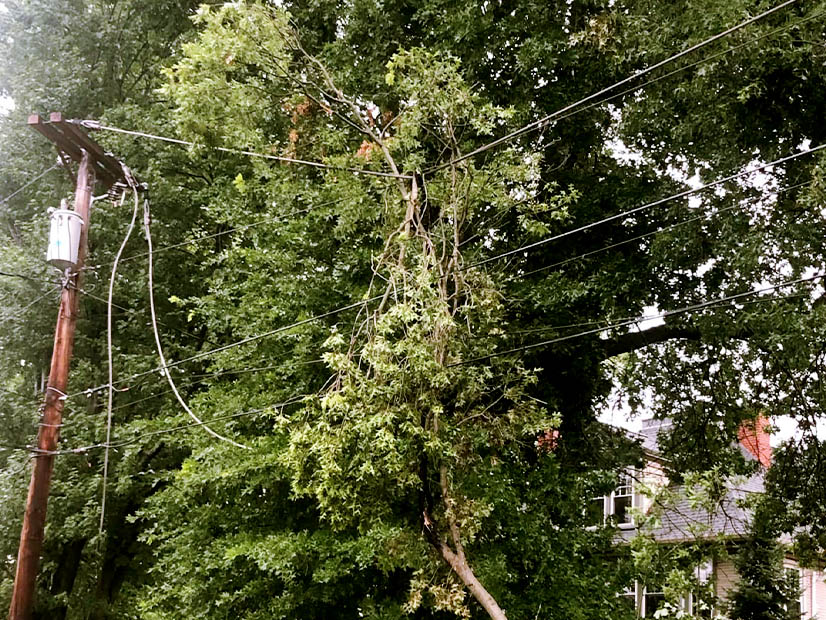More than 200,000 American Electric Power (NASDAQ:AEP) customers in Ohio lost electricity after storms Monday damaged multiple transmission lines and forced PJM to order load sheds on at least three 138-kV lines.
AEP reported Tuesday morning that more than 145,000 customers lacked power after “straight line winds and lightning crossed the state and took down trees and power lines.” Crews had restored power to about 10,000 customers overnight.
But as of 5 p.m. Tuesday, AEP’s outage map listed more than 210,000 customers out of service in an area south of Akron and Toledo, including Columbus and the Southeastern part of the state. The number had dropped to 206,000 by 7 p.m.
PJM said “a transmission disturbance” around 1:40 p.m. ET “resulted in multiple 138-kV lines going out of service, creating overloads on other transmission lines.”
The RTO responded at 2:02 with a load-shed directive to prevent overloads on the 138-kV Kenny-Roberts line near Columbus; followed by a similar order for the 138-kV Clinton-Karl at 2:06 p.m., and one for the 138 kV Marion-Obetz at 2:35.
At 3:15 the RTO issued a maximum generation emergency/load management alert and an EEA1, indicating it “foresees or is experiencing conditions where all available resources are scheduled to meet firm load, firm transactions and reserve commitments, and is concerned about sustaining its required contingency reserves.”
AEP crews restored power to about 10,000 customers overnight after storms Monday. | AEP Ohio
The alert called maximum emergency generation into operating status. Generation dispatchers were directed to inform PJM an estimate of how much time they need to return to generation on planned outages to service.
By 3:50, PJM had ordered an emergency load management reduction action and declared a NERC level EEA2, signaling “public appeals to reduce demand, voltage reduction and interruption of non-firm load in accordance with applicable contracts, demand-side management or utility load conservation measures.”
In issuing the load shed, the RTO also declared that performance assessment hour guidance was in effect for AEP. Online generators were directed to follow PJM’s basepoints or manual dispatch instructions, and the RTO warned that those that underperform may be assessed a nonperformance charge; those that generated megawatts above the basepoint risked deviation charges.
PJM said it would directly call offline generators and load management resources available to help mitigate the emergency and that those that fail to meet the dispatch instructions may be assessed a non-performance charges.
The storms followed PJM’s issuance Monday of a Hot Weather Alert for the Western region Tuesday and Wednesday, directing transmission and generation dispatch operators to consider deferring or canceling scheduled maintenance and testing. Generation dispatchers also were asked to review and, if necessary, update their unit parameters to ensure the accuracy of their start-up and notification, minimum/maximum run times and emergency minimum/maximum information.
The forecasted peak for Tuesday was 130,888 MW, rising to a projected peak of 142,942 MW on Wednesday.




